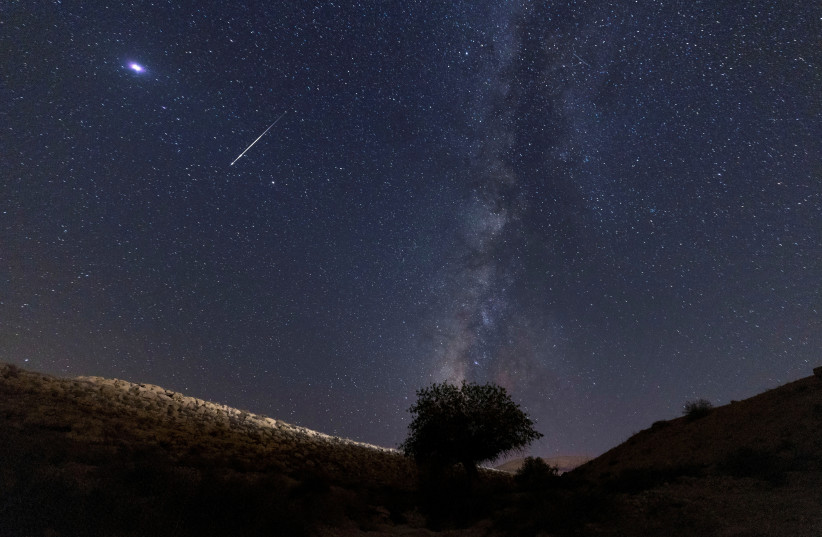The Perseid meteor shower reaches its peak this week and the desert city of Yeruham is preparing an out-of-this-world event for those interested in watching the falling stars.
The Perseids are considered one of the two best meteor showers of the year alongside the Geminids which take place in December. At its peak, the Perseids can produce about 50 to 100 meteors per hour, according to NASA. Be aware, however, that meteor showers are sporadic, so you may only see one or two every few minutes and there may be larger gaps of time between meteors. The name of the game with meteor showers is patience.
The Perseids have their source in dust and debris from the Comet 109P/Swift-Tuttle, which was last in Earth's orbital path in 1992.
The shower’s peak is set to take place on the night between August 12 and 13, although the shower is already active and will grow more active as the peak night nears.
While last year a full moon dimmed the celestial light show, this year the moon will be a waning crescent, providing ideal viewing conditions.


Those interested in finding a good viewing site in the days leading up to the peak will have the opportunity on Thursday to take part in a star gazing event in Yeruham in southern Israel.
During the event, which will take place at the Yeruham Lake Park, visitors will be able to enjoy a large field of telescopes and stargazing guides who will help visitors gaze upon the craters of the moon, Saturn and its rings, Jupiter and its moons, star clusters, galaxies, nebulae, and double stars.
The guides will also educate visitors about the North Star, the constellations and the zodiac, and history, science, and mythology concerning the stars and planets.
The event, organized by the Yeruham Economic Development Corporation and Visit Yeruham, will also include lantern tours, scorpion tours, light traps, face painting stands, a giant model of the solar system, and a Mars mission workshop. The event has a NIS 30 entry fee.
How best to view the Perseids
While fewer meteors show up during the evening hours, looking toward the horizon during the evening is recommended if you want to spot "earthgrazers," colorful meteors that travel slowly across the sky while leaving a long trail, according to the American Meteor Society. To spot the largest number of meteors, watch after midnight. The usual peak hour is around 3-4 a.m.
As with any meteor shower, the most favorable conditions for viewing require the darkest skies possible. For this reason, it's always best to be distant from cities and sources of light when viewing one, because light pollution makes it difficult to spot meteors.
To lessen the impact of the moon's light, place a large structure or natural object between yourself and the moon. Stand or lay down with the moon behind you for the best viewing experience. It's best to avoid checking your phone while star gazing as the light messes with your ability to see the shooting stars.
The meteors come from the direction of the constellation of Perseus which sits in the northeastern sky, but don't just look at the constellation when searching for shooting stars as they could appear at any point in the night sky. It's best to lie on your back in order to see as much of the sky as possible in order to catch the most meteors.
The Negev is often a good place to see the shower, with the areas around Mitzpe Ramon and Yeruham being a favorite for many as there is little light pollution in those areas. Often, tens of thousands of Israelis head to the Negev on the peak night to view the shower so be prepared for traffic.
Remember, the desert can get cold at night so make sure to bring blankets and warm clothes.
